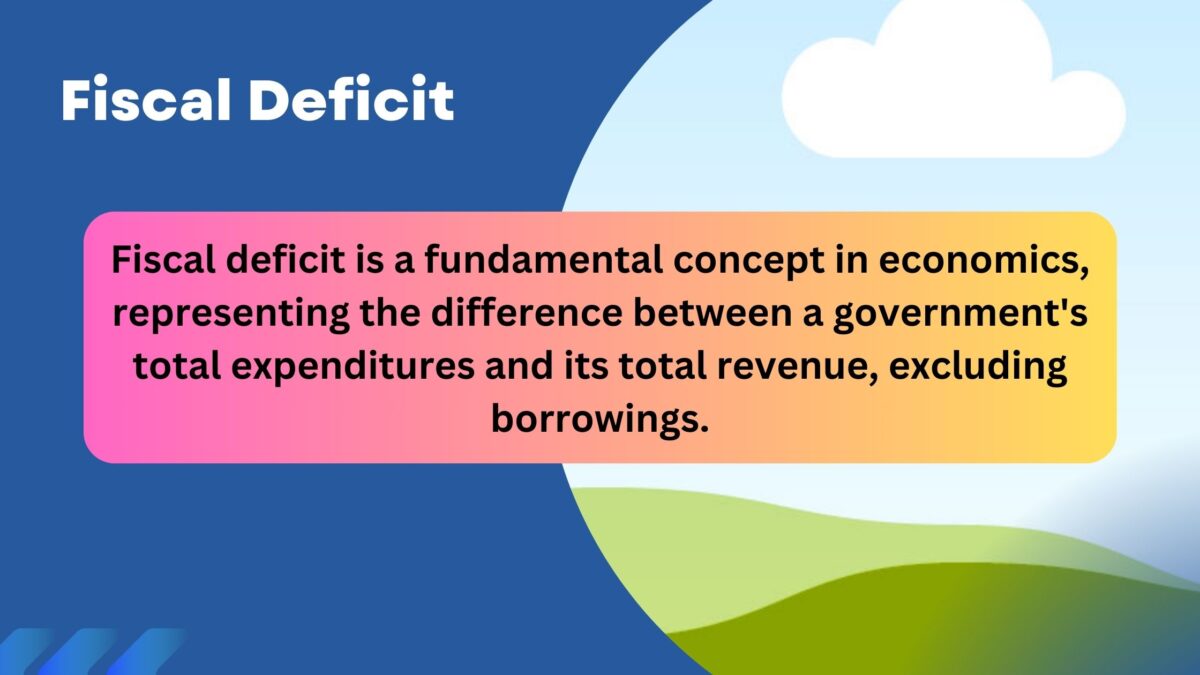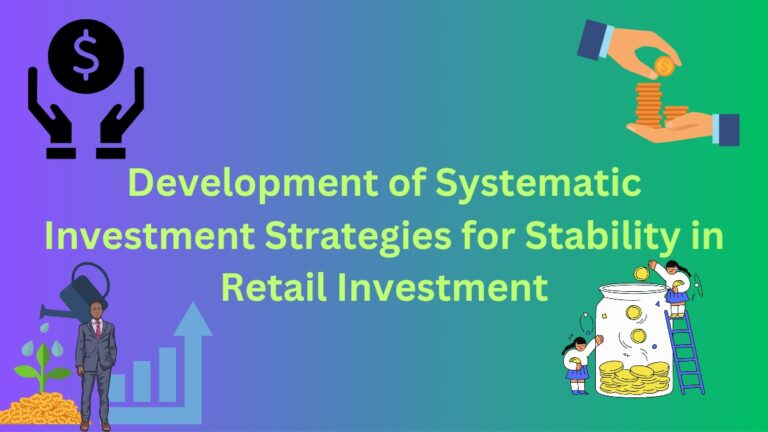What is Gross Domestic Product (GDP): Meaning, Understanding and Significance [Updated 2024]

Gross Domestic Product (GDP) stands as one of the most fundamental metrics in economics, serving as a yardstick for a nation’s economic performance and well-being. Here, we will explore the intricacies of GDP, meaning, calculation, interpretation, significance, limitations, and its role in shaping economic policies and societal progress.
GDP Meaning
The full form of GDP is Gross Domestic Product. GDP is the value of all finished goods and services produced in country withing its boundary during a specific time period. It indicates the economic size of a country and the rate of change of GDP for a period is the measurement of economy progress or regress of a country.

Understanding of GDP
GDP represents the total monetary value of all final goods and services produced within a country’s borders during a specific period. It encompasses various economic activities, including consumption, investment, government spending, and net exports (exports minus imports). GDP provides a comprehensive snapshot of a nation’s economic output and is crucial for assessing its overall economic health and growth trajectory.
Calculation of GDP
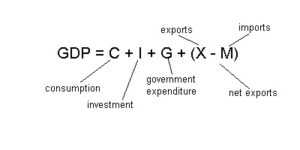
There are three primary approaches to calculating GDP, as follows:
1. Production Approach:
This method sums the value added at each stage of production across all industries within the economy. It calculates GDP by adding up the value of all goods and services produced, excluding intermediate inputs to avoid double-counting.
2. Expenditure Approach:
Expenditure approach calculates GDP by summing up all expenditures on final goods and services within the economy. It includes consumption (C), investment (I), government spending (G), and net exports (NX), expressed as GDP = C + I + G + NX.
3. Income Approach:
The income approach calculates GDP by summing all incomes earned by individuals and businesses within the economy, including wages, profits, rents, and taxes (less subsidies). Regardless of the approach used, the resulting GDP figure provides an aggregate measure of economic output within a given timeframe.
Interpretation of GDP
GDP serves as a key indicator of economic performance and is interpreted in various ways:
- Economic Growth: Positive GDP growth indicates an expansion of the economy, while negative growth suggests a contraction. Sustainable GDP growth is essential for increasing living standards, reducing unemployment, and fostering overall prosperity.
- Standard of Living: GDP per capita means the division of GDP by the population, provides insights about average income and material well-being of a country’s residents. Higher GDP per capita generally correlates with a higher standard of living, although it may not capture disparities in income distribution.
- Business Cycles: Changes in GDP over time reflect fluctuations in economic activity, characterized by periods of expansion, peak, recession, and trough. Monitoring these fluctuations helps policy makers anticipate and respond to economic downturns through appropriate fiscal and monetary policies.
Significance of GDP
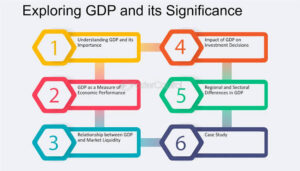
GDP plays a crucial role in informing economic policies, guiding investment decisions, and shaping public discourse:
- Policy Formulation: Governments rely on GDP data to formulate fiscal and monetary policies aimed at stabilizing the economy, promoting growth, and achieving key socio-economic objectives, such as full employment and price stability.
- Resource Allocation: Businesses, investors, and policymakers use GDP data to allocate resources efficiently, identify growth opportunities, and prioritize sectors that contribute most significantly to economic development.
- International Comparisons: GDP facilitates comparisons of economic performance between countries, enabling policymakers and analysts to assess relative strengths and weaknesses, identify best practices, and foster international cooperation.
Limitations of GDP
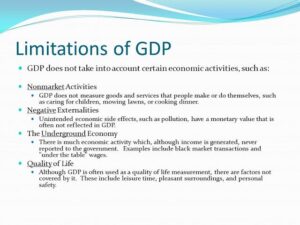
Despite its prominence, GDP has several limitations that warrant consideration:
- Incomplete Measure: GDP does not account for non-market activities, such as household production, volunteer work, and informal sector transactions, leading to an incomplete representation of economic activity.
- Quality of Life: GDP fails to capture factors that contribute to overall well-being, such as environmental quality, health outcomes, educational attainment, and social cohesion, thus providing an inadequate measure of societal progress.
- Income Distribution: GDP does not reflect income distribution within a country, leading to disparities in wealth and well-being that may not be adequately captured by average GDP per capita.
- Quality vs. Quantity: GDP does not distinguish between goods and services based on their quality or utility, leading to potential inaccuracies in assessing true economic value.
Beyond GDP: Alternative Measures of Progress
Recognizing the limitations of GDP, there has been growing interest in developing alternative measures of progress that incorporate broader indicators of well-being and sustainability.
- Examples include: Genuine Progress Indicator (GPI): GPI adjusts GDP by accounting for factors such as income distribution, environmental degradation, and changes in leisure time, providing a more holistic measure of societal welfare.
- Human Development Index (HDI): HDI combines indicators of life expectancy, education, and income to assess human development beyond economic output, offering a more comprehensive view of societal progress.
- Green GDP: Green GDP incorporates environmental factors into GDP calculations by accounting for the costs of environmental degradation and resource depletion, reflecting the true sustainability of economic growth.
Conclusion:
In conclusion, Gross Domestic Product (GDP) serves as a cornerstone of economic analysis and policymaking, providing valuable insights into a nation’s economic performance, growth prospects, and standard of living.
However, GDP should be viewed as one among several indicators of progress, recognizing its limitations in capturing the complexities of human well-being and environmental sustainability.
By complementing GDP with alternative measures of progress, policymakers and societies can strive towards more inclusive, equitable, and sustainable forms of development that prioritize the well-being of people and the planet.
Also read:




